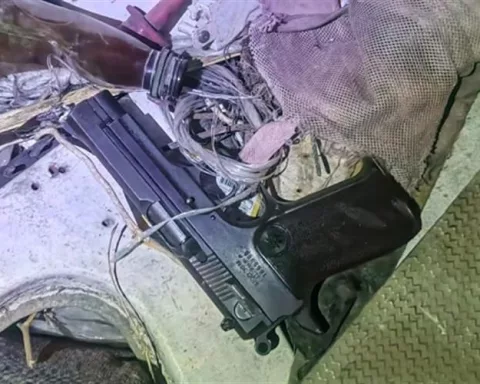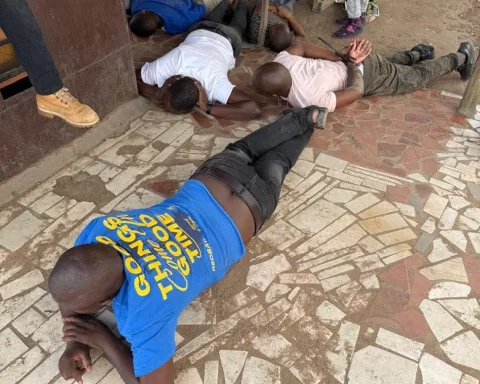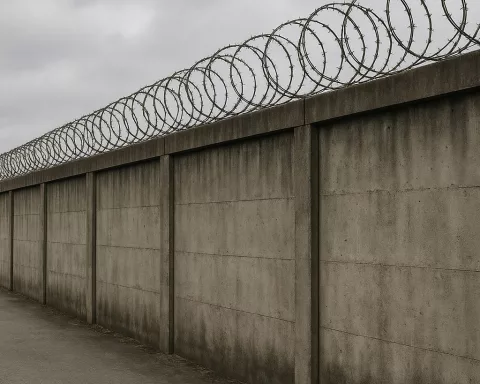In Factreton, a fierce battle erupted between local residents and law enforcement over housing rights, laying bare deep-seated tensions. City officials aimed to demolish homes in an informal settlement, but the community fought back, seeing these structures as crucial for their survival. Amidst the chaos, injuries were reported, including a tragic incident where a young boy was struck by a rubber bullet. Activists, including a professor who was arrested during the protests, highlighted the injustices faced by vulnerable populations, sparking a call for justice and change in a society grappling with its past. This struggle in Factreton symbolizes the ongoing fight for dignity, rights, and fair treatment in South Africa.
What are the key issues highlighted by the Factreton conflict?
The Factreton conflict reveals critical issues such as:
– Tensions between local residents and law enforcement over housing rights.
– The impact of legal authority versus community needs.
– The physical and emotional toll on vulnerable populations.
– The role of activists and academics in advocating for justice.
An intense confrontation erupted in Factreton, highlighting the underlying socio-economic and political tensions between local residents and law enforcement. This escalating conflict, which captured the community’s attention over the weekend, showcased deep-seated issues fueled by a protest, injuries, and a contentious court order. The unfolding events reflect a broader narrative of struggle and defiance in the face of perceived injustice.
The Battle for Shelter
At the heart of the conflict was the informal settlement on 18th Avenue, a place where the daily reality of hardship meets the resilience of its residents. When city authorities moved to dismantle what they labeled as illegal structures on land owned by the Ndabeni Trust, the community’s response was one of resistance. For the people living there, these homes represented more than just buildings; they were essential sanctuaries amidst their precarious existence.
The residents viewed the demolition not merely as a loss of property but as an attack on their dignity and survival. These structures, though unauthorized, provided a semblance of stability, and their removal threatened to undermine the fragile security that residents had painstakingly built. The situation highlighted a fundamental disconnect between official mandates and the human realities they impacted.
Voices of the Community
Local ward councillor Cheslyn Steenberg emerged as a pivotal figure amidst the chaos, amplifying the community’s anguish and validating their grievances. He reported numerous injuries among residents due to the law enforcement operation, with a tragic incident involving a 16-year-old boy who lost an eye after being struck by a rubber bullet. This young victim’s ordeal became emblematic of the indiscriminate violence that marred the protest.
Steenberg’s observations underscore the community’s frustration and the perceived brutality of the law enforcement’s actions. The incident with the young boy served as a stark reminder of the physical and emotional toll that such confrontations exact on vulnerable populations. The struggle for justice and accountability became a rallying cry for those affected by the events of that weekend.
Legal Justifications and Disputes
Wayne Dyason, spokesperson for the City’s Law Enforcement, defended the officers’ actions, citing a court order as the legal basis for their operation. However, this justification was met with skepticism and criticism. Steenberg argued that the responsibility for executing the court order should have rested with the South African Police Service (SAPS) instead of the City’s Law Enforcement, highlighting a jurisdictional conflict that pointed to deeper issues of accountability.
The debate over who should have enforced the directive brought to light the complexities of legal authority and the challenges in executing mandates that significantly impact communities. The residents’ protest against the perceived overreach of law enforcement underscored their demand for respect and fair treatment, as the legal proceedings further highlighted the tensions between civic duty and authoritative enforcement.
Arrests and Controversy
The protests led to several arrests, including former University of the Western Cape Professor Brian Williams, who faced charges of public violence and interference with police duties. Williams’ detention drew widespread attention, particularly after footage he captured showed a law enforcement officer assaulting him before his arrest. This video, shared widely, amplified the controversy surrounding the law enforcement’s conduct.
The arrests, and the subsequent court appearances, brought the issue into the public spotlight, with Williams and his fellow defendants granted bail. Their case, postponed to March 2025, promises to be a pivotal moment in examining the legal and moral implications of the actions taken during the protest. The involvement of an academic figure like Williams highlighted the intersection of activism and academia in challenging systemic inequalities.
Broader Implications and Historical Context
The events in Factreton are a microcosm of larger socio-political dynamics at play in South Africa. They echo the enduring struggle for land and housing, issues deeply rooted in the country’s history of apartheid and its legacy of spatial and economic disparities. Informal settlements, such as the one in Factreton, are poignant reminders of the ongoing battle for basic human rights and dignity.
Professor Williams’ participation in the protest underscores the critical role intellectuals play in advocating for marginalized communities. His arrest and subsequent release reflect the delicate balance between civic engagement and the potential consequences in a society striving to align its democratic ideals with ground-level realities. His involvement signals a broader call to action for those willing to stand against systemic injustices.
The Path Forward
In the aftermath of these tumultuous events, the community’s voices remain steadfast in their demand for justice and accountability. The vivid images and poignant stories emerging from Factreton highlight the human cost of socio-legal conflicts and the urgent need for empathetic governance and policy reevaluation affecting vulnerable populations.
As the area grapples with the repercussions of the confrontation, broader societal implications loom large. The narrative extends beyond a simple clash over land, serving as a vivid depiction of the ongoing quest for equality, justice, and recognition in a nation still healing from its past. The weekend’s events offer a sobering reflection on the complexities of law enforcement, community rights, and the enduring fight for equitable treatment under the law. These layers of conflict and resilience serve as a powerful testament to the unyielding spirit of those struggling for their rightful place in society’s margins.
FAQ: A Clash of Community and Authority in Factreton
What sparked the conflict in Factreton?
The conflict in Factreton was ignited by city officials’ attempt to demolish homes in an informal settlement on 18th Avenue. Residents viewed these structures as vital for their survival, leading to protests and confrontations with law enforcement.
How did the community respond to the demolition orders?
The community responded with fierce resistance, viewing the demolition not just as a loss of property but as an attack on their dignity and security. Local ward councillor Cheslyn Steenberg played a crucial role in voicing their grievances and highlighting the injuries sustained during the protests.
What were some reported incidents during the protests?
During the protests, several residents were injured, including a tragic incident where a 16-year-old boy lost an eye after being struck by a rubber bullet fired by law enforcement. This incident underscored the perceived brutality of the police response and became a focal point for calls for justice.
How did law enforcement justify their actions?
Wayne Dyason, spokesperson for the City’s Law Enforcement, defended their actions by citing a court order that authorized the demolition. However, this justification was met with skepticism, with community members arguing that such enforcement should have been handled by the South African Police Service (SAPS) instead.
What role do activists and academics play in the conflict?
Activists and academics, including former Professor Brian Williams, have played significant roles in advocating for the community’s rights and justice. Williams was arrested during the protests, and his involvement highlighted the intersection of activism and academic advocacy in challenging systemic injustices.
What are the broader implications of the Factreton struggle?
The events in Factreton reflect larger socio-political dynamics in South Africa, particularly regarding land and housing rights that are rooted in the legacy of apartheid. This struggle illustrates ongoing issues of inequality, dignity, and the urgent need for policy reevaluation to address the needs of vulnerable populations. The situation serves as a reminder of the complexities involved in balancing community rights with legal authority.












